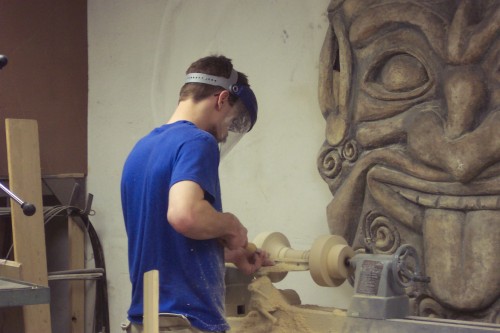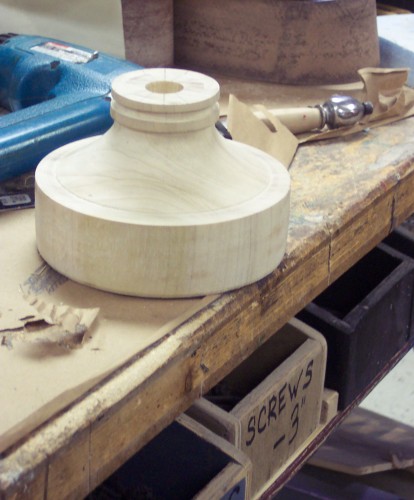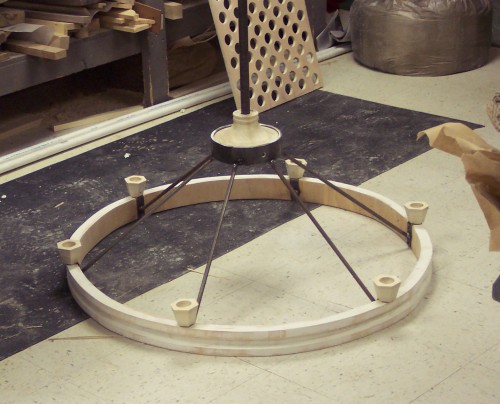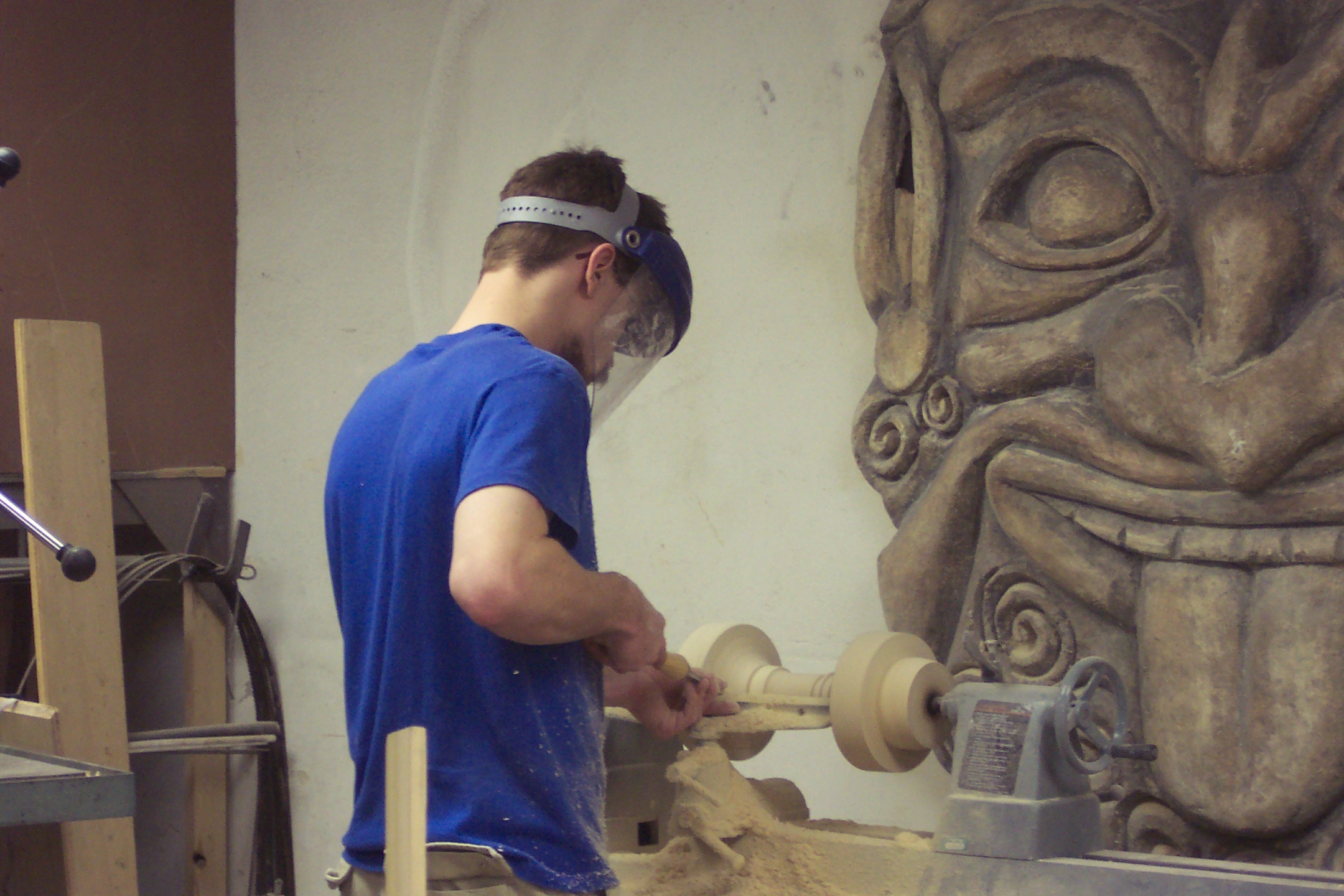As part of the new year, I’m going to be digging through my archives of props I’ve built in previous years. The first one is a chandelier I built for Romeo and Juliet. It was one of my first prop projects in graduate school, and the first prop I built which involved welding.
The first part I made was the body dish. I turned it on the lathe out of poplar. The outside needed to be a specific diameter, as we shall see shortly. I also drilled a hole through the center for the hanging hardware and wires to go through.


Next I cut a circle out of 3/4″ plywood to use as a template for the main ring. I made that out of several strips of what we call “wiggle wood”, which is a bendable plywood. I wrapped one layer around the circle, then glued another layer around the first one, with the seams offset so they would hold the circular shape. I added a thinner strip to the top and bottom to mimic molding.

I left the chandelier in the jig and marked the center of the circle template. I then added a little stand with a smaller circle on top, also centered. I placed the body dish on top of that. This ensured that the body dish was centered within the ring, level, and at the correct height above the ring.
See that metal ring in the above picture? That is why I needed my body dish to be a specific diameter; the ring needs to sleeve on the outside of it. I cut the ring from a section of large pipe that was laying around. On the right side of the picture, you can see some metal brackets bunched together. These will be spread evenly around the wiggle wood ring and hold the cups for the candles. They will then have a metal rod welded to them, with the other end welded to the metal ring on the body dish.

Ta-da! I next ran wires out the bottom of the cups, along the rods, and up through the center. The only thing left to do was glue the electric candles into the cups, which you can only do with a bushy beard.

Actually, what I meant to say was that the only thing left to do was hang a big disco ball from the center, because every chandelier needs a disco ball.

Notice in the picture that I made more than one chandelier. The template and jig not only allowed me to get all the shapes and spacings correct, it also enabled me to duplicate the same prop without having to remeasure everything.



